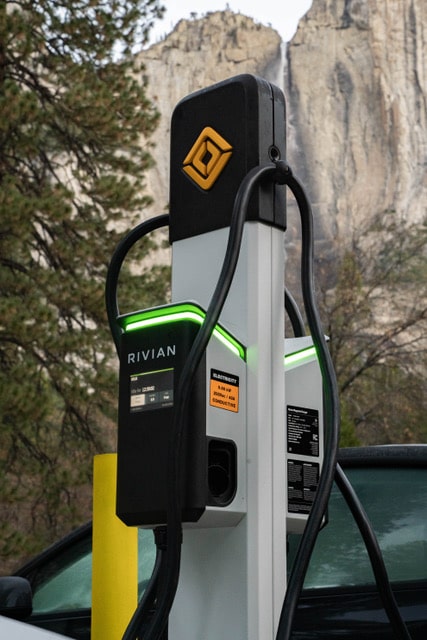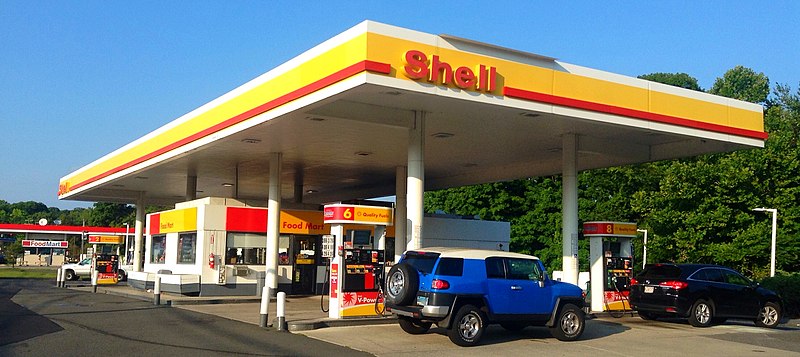Interview: Rivian’s Jason Cortes-Adcock Discusses Rivian, EV Adoption and EV Charging
Jason Cortes-Adcock, Senior Regional Sales Manager for Rivian, was interviewed by Bill Pierce, Publisher, EVinfo.net. In this interview, Cortes-Adcock shares information about his professional background, as well as the EV and EV charging industries.

BP: Tell us about yourself
JCA: I’m originally from Mineral Wells, a small town in north Texas. I currently live in San Antonio, TX and have 6 kids ranging from 3 to 23. My 24 year career span has been based in transportation, operations and fueling equipment technologies. I currently work for Rivian in their Energy & Charging division. I am part of a commercial unit focused on establishing strategic partnerships with select companies to host our Rivian Waypoints Network chargers.
BP: Is Rivian building a proprietary network?
JCA: The Rivian Waypoints Network is an open network with an SAE J1772 output making our chargers available to all EV makes and models.

BP: When did you enter the EV industry?
JCA: I entered the EV Infrastructure (EVI) industry in 2017 working for a company that was a reseller and installer of ChargePoint products. Remarkably enough this same company was a leading distributor within the Petroleum Equipment Industry (PEI).
BP: What does a PEI company do?
JCA: Companies in this industry sell, install and service petroleum fueling equipment such as fuel tanks, fuel dispensers, piping, containment systems as well as inventory management & point-of-sale systems.
BP: Who are PEI customers?
JCA: They represent petroleum marketers as well as owner/operators of gas stations and truck stops. Commercial refueling centers operated by private or public fleets also represent a type of customer served by PEI companies.
BP: A petroleum equipment company involved with EVs?
JCA: They were forward thinking and open to innovative revenue streams. When I joined them in 2017 a reseller agreement with ChargePoint was finalized and we went to market selling their AC & DCFC products. With retail and commercial fueling providers as prospects, I launched into outreach. Response rates were a mixed bag of interest, skepticism, and outright resistance. Instead of viewing EVI an alternative fuel source some considered it a competitive technology and even threat to their business. I was early to market and it was not an easy sell so I had to focus on crafting an education based narrative.
We held our position and seized any opportunity we could. To generate revenue and gain industry experience we had to go outside of our normal customer base. This meant I had to learn how to sell into new and diverse verticals. Thankfully we had some traditional customers who were forward thinkers. I am thankful to have been part of EVI projects such as Fuel America of Encinal, Texas. They were the first fueling retailer in the state to open a brand new truck stop that included DCFC and AC chargers.
The market advanced quickly from 2017 to 2020. Customers who would not return a call or take a meeting started plans to electrify their forecourts. In 2019, leading manufacturers of fueling equipment entered the EVI equipment space. Gilbarco-Veeder Root began a partnership with Tritium and Dover Fueling Solutions announced collaboration with ChargePoint.
Other PEI distributors began formulizing partnership with charging networks and entered the EVI market. Interestingly a survey was conducted of PEI distributors in 2018 regarding their intentions toward EVI. Results found that under 4% were involved, over 50% were indecisive, and nearly 30% had zero intentions. By 2020 those numbers had reversed and changed their position.

BP: So when did EV chargers start appearing at Gas Stations and Truck Stops?
JCA: Some brands like Sheetz started considerably early; they had chargers at some of their sites in 2013. Wawa started hosting chargers in 2017 and had achieved 50 locations with EVI by mid 2021. Momentum picked up between 2019 & 2020 with brands such as 7-11, Wallys, Loves and Pilot Flying J getting chargers added to their sites.
Many of these brands commenced their EVI efforts by partnership with Tesla building out its supercharger network by leveraging their real estate. Some partnered with Electrify America EVGo as host to their network in lieu of owning and operating EVI directly.
Various partnerships in the industry continue to manifest. ChargePoint announced in 2020 a partnership with NATSO with a goal of deploying chargers at 4,000 trucks stop across the US.
2021 saw Travel Centers of America announced partnership with FreeWire and Circle K open an EVI site in Norway.
BP: Do you think Gas Stations and Truck Stops will become the primary place to find EV chargers?
JCA: From an amassed real estate perspective, they can become a critical player in our national electrification goals. It makes sense that as a provider of liquid fuels they should offer electrons as fuel too. As consumers pivot from traditional fuel vehicles to EVs this also becomes a matter of customer retention. This year an industry study led by NACS determined there are 148,026 convenience stores, a quantity nearly identical to a 2012 study. This signals that an aggregate real estate has maintained its position and purpose.
All of that said, their ideal customer profile has a limited dwell time. EVI and traditional fueling do not mirror each other as the experience differs in ways such as time and transaction. In addition to resolving the infrastructure nuances to support EVI, they will need to be innovative with their onsite offerings and amenities.
BP: What do you view as barriers to EV adoption?
JCA: At both consumer and commercial levels, education is key. Dealerships need to equip their sales staff with training from EV industry experts on how to sell this new technology. Consumers are being incentivized to go EV with tax credits and state rebates but they need to know about them. These rebates need to be accessible to the consumer at time of purchase, not after the fact. I hear the cost of EVs is its own barrier but compared to traditional vehicle prices coupled with their maintenance and fueling costs, total cost of ownership balances out.
Within the commercial sector, businesses wanting to electrify fleets or become an EVI host most overcome several common obstacles – infrastructure, fleet model options, utility energy usage policies to name a few. Utility Providers are either an advocate or a barrier to businesses that want to launch an EVI strategy. I’ve had some utilities derail opportunities with excessive interconnection costs or by attempting to convert a prospect to their own internal EVI solution. Ultimately success is predicated upon an educative approach that industry professionals can provide.
BP: Any parting comments?
JCA: We are seeing firsthand the reshaping of every element of transportation. Mobility for people and product is evolving through a technological shift. This transition has ushered in an era of disruption but herein lies so many opportunities.
Thanks Jason Cortes-Adcock for taking the time to speak with us. We greatly appreciate your efforts in EV adoption and your time.

Electric Vehicle Marketing Consultant, Writer and Editor. Publisher EVinfo.net.
Portfolio: BillPierce.net
